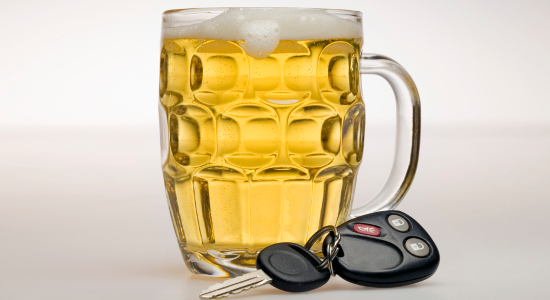
March 6, 2017 – A motorcyclist suspected of drunk driving after hitting a deer was unconscious when a deputy sheriff initiated a warrantless blood draw. Recently, a state supreme court majority ruled the blood draw was legally justified, for different reasons.
Three justices ruled the blood draw was justified by exigent circumstances. Two other justices ruled the blood draw was justified by Wisconsin’s implied consent rule, which says drivers impliedly consent to blood or breath tests upon arrest for drunk driving.
Though providing different reasons, these five justices together reversed the decision of a lower circuit court, which had ruled that the implied consent rule is unconstitutional when applied to unconscious persons who cannot withdraw their implied consent.
The case bypassed the appeals court, which certified a single issue: “whether provisions in Wisconsin’s implied consent law authorizing a warrantless blood draw from an unconscious suspect violate the Fourth Amendment to the [U.S.] Constitution.”
In State v. Howes, 2017 WI 18 (March 1, 2017), five justices joined a mandate that the circuit court decision should be reversed, but presented differing rationales.
Circumstances of the Blood Draw
In July 2013, around 9:13 p.m., a deputy sheriff in Dane County received a report of a motorcycle accident. The motorcyclist, Davis Howes, had hit a deer and was unconscious and severely injured when the deputy arrived on scene.
Emergency Medical Services (EMS) was already tending to Howes. The deputy, Robert Schiro, would later testify that a bystander told him Howes smelled of intoxicants, but the deputy, tending to the accident scene, did not obtain the bystander’s name.
The deputy secured the accident scene and left for the hospital when other officers arrived. The deputy checked Howes’ driving record and discovered Howes had three prior convictions for OWI, meaning the deputy knew Howes was subject to a lower blood alcohol concentration (BAC) limit of 0.02 percent, rather than 0.08 percent.
The deputy also asked EMTs if they smelled alcohol on Howes while in transport. One, positioned near Howes’ head, indicated a strong odor of intoxicants emanating from Howes. The other EMT, position by Howes’ feet, said he did not smell anything.
In the emergency room, a nurse confirmed a strong odor of intoxicants in Howes’ room. The sheriff’s deputy then learned that Howes was in critical condition, still unconscious with a potential brain injury, and that he would need a CT scan of his brain.
 Joe Forward, Saint Louis Univ. School of Law 2010, is a legal writer for the State Bar of Wisconsin, Madison. He can be reached by email or by phone at (608) 250-6161.
Joe Forward, Saint Louis Univ. School of Law 2010, is a legal writer for the State Bar of Wisconsin, Madison. He can be reached by email or by phone at (608) 250-6161.
At that point, at about 10:15 p.m., Deputy Schiro believed he had probable cause to arrest Howes for OWI and prohibited alcohol concentration (PAC).
Howes was still unconscious when the deputy asked Howes to submit to a blood test, and hearing no response, the deputy instructed hospital staff to draw Howes’ blood. The blood draw occurred around 11:17 p.m., about two hours after the accident. The deputy did not attempt to obtain a warrant before initiating the blood draw.
Circuit Court Grants Suppression Motion
The blood test revealed that Howes’ BAC was 0.11 percent, well over the 0.02 percent legal limit that applied to him as a repeat drunk driving offender. The state used this evidence to charge Howes with OWI and PAC, fourth offenses within five years.
Howes filed a motion to suppress the evidence obtained from the blood draw.
The circuit court ruled that the deputy had probable cause to make the arrest, but concluded that Wisconsin’s implied consent law, Wis. Stat. section 343.305(3)(b), is facially unconstitutional as applied to unconscious persons.
Section 343.305(3)(b) says that unconscious persons not capable of withdrawing consent to blood draws are “presumed not to have withdrawn consent … if a law enforcement officer has probable cause to believe the person” was driving drunk.
On appeal, the appeals certified the case to determine whether the implied consent law is constitutional with respect to unconscious persons.
Lead Opinion – Exigent Circumstances Existed
In a lead opinion, Chief Justice Roggensack ruled that the blood draw did not violate constitutional protections against unreasonable searches and seizures because the deputy faced exigent circumstances. Thus, the warrantless blood draw was warranted.
Chief Justice Roggensack, joined by Justices Rebecca Bradley and Daniel Kelly, ruled that the deputy had probable cause and was justified in obtaining the blood draw without a warrant because he could have reasonably believed further delay would result in destruction of evidence, that is, the dissipation of alcohol from his bloodstream.
The lead opinion noted that dissipation of alcohol in a suspect’s bloodstream cannot alone constitute an exigent circumstance that justifies a blood draw, and police must obtain a warrant if they have time to do so under a 2013 U.S. Supreme Court decision.
But the lead opinion also noted that the decision, Missouri v. McNeely, leaves room to find exigent circumstances based on the totality of circumstances.
That is, if an officer is delayed in obtaining a blood draw because of the suspect’s medical condition, or the officer was delayed by other police duties, these are exigent circumstances that would allow an officer to obtain a blood draw without a warrant.
Chief Justice Roggensack noted that in this case, those types of delays were present because the deputy had to secure the accident scene and the time frame for a blood draw was uncertain given Howes’ medical condition. Additionally, the officer also knew that Howes was subject to a lower BAC of 0.02 percent, based on prior convictions.
“As each minute passed, the likelihood that Howes’ blood alcohol level would diminish to 0.00 percent increased significantly,” Roggensack wrote. “At 0.00 percent, it would be impossible to calculate what his blood alcohol level was at the time of the accident.”
The chief justice also noted that the deputy could not obtain a warrant until he had probable cause, and that did not occur until he arrived at the hospital.
“Applying for a warrant after his conversations with Howes’ care-givers would have led to additional delay and further dissipation of alcohol from Howes’ bloodstream,” wrote Roggensack, concluding the blood draw was constitutional because “under the totality of the circumstances the exigent circumstance of destruction of evidence existed.”
The lead opinion did not address the constitutionality of Wisconsin’s implied consent law, which was the question presented by the appeals court’s certification.
Justice Gableman’s Concurrence Focuses on Implied Consent Law
Justice Michael Gableman, joined by Justice Annette Ziegler, wrote a concurring opinion. He agreed that the circuit court’s suppression decision should be reversed, but decided the case under the state’s implied consent law, as the appeals court had asked.
Justice Gableman said the unconscious-driver provisions of the implied consent law “put every driver on notice that, in the event that he or she becomes unconscious and, for example, an officer has probable cause to believe the driver is guilty of a drunk-driving offense, the driver’s previously given consent would remain unrevoked.”
Gableman ruled that Howes did not meet his burden to prove the unconscious-driver provisions of the implied consent law were unconstitutional beyond a reasonable doubt.
Justice Abrahamson Dissents with Two Other Justices
Justice Shirley Abrahamson wrote a dissent, joined in full by Justice Ann Walsh Bradley. Justice Daniel Kelly joined Part II of Abrahamson’s dissent, which concluded that the unconscious-driver provisions of the implied consent law are unconstitutional.
“Upon considering the parties’ arguments, the reasoning of the circuit court, and case law from the [U.S] Supreme Court and the states, I conclude that the Wisconsin implied consent statute, applied to unconscious drivers, does not provide an independent and valid consent exception to the warrant requirement,” Justice Abrahamson wrote.
Again, only three justices (not a majority) decided that the unconscious-driver provisions are unconstitutional, leaving this issue ripe for another day.
Justice Abrahamson, joined by Justice A.W. Bradley, also wrote a strongly worded dissent with respect to the lead opinion’s analysis, asserting the lead opinion decided the case on grounds of “exigent circumstances” when that was not the issue presented.
“By raising and deciding the exigent circumstances exception sua sponte without giving the defendant an opportunity to present evidence or to be represented by counsel, the lead opinion violates basic concepts of due process and violates the adversary system at both trial and appellate levels,” Justice Abrahamson wrote.
Abrahamson also concluded that “no reasonable view of the record supports the holding that exigent circumstances justify a warrantless blood draw in the instant case.”
Justice Abrahamson noted that Deputy Schiro, on cross-examination and redirect, indicated that he had “plenty” of time to obtain a warrant but did not believe he had to, and also noted that Dane County judges are on-call 24/7 to issue telephone warrants.
